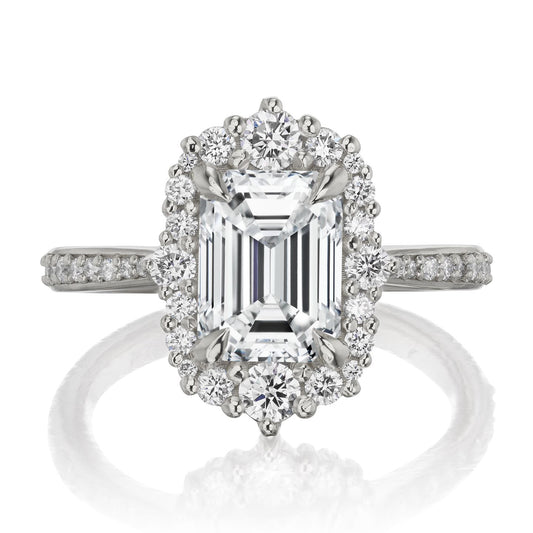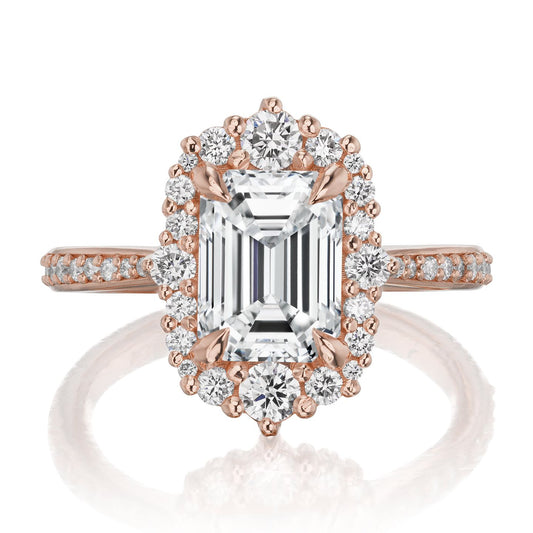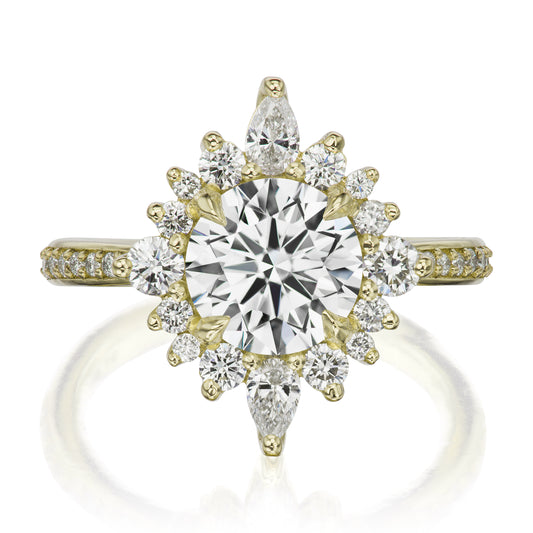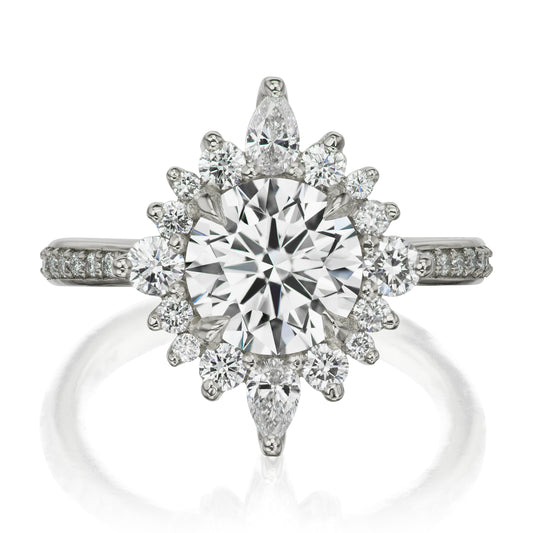Clear Cut: Comparing Diamond, Moissanite & White Sapphire
At first glance, all clear stones might seem similar – and in some instances they are -- but each is an entirely different mineral that looks and behaves differently. Learning about their key differences will help you select a stone that’s just right for you.
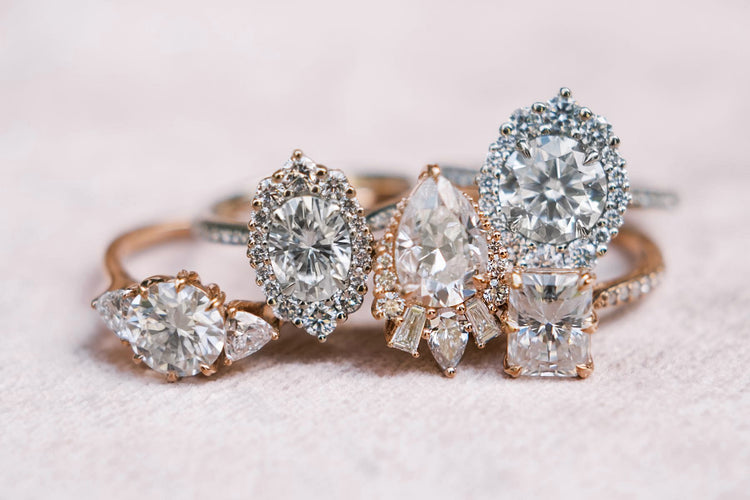
MINED
DIAMOND

LAB-GROWN DIAMOND

MOISSANITE

WHITE SAPPHIRE
A Natural Icon
Diamond
What's to Love: Ranking at a 10 on the Mohs Scale of Hardness, diamonds are the hardest material on earth—an important feature for an everyday ring that will be worn for decades, if not centuries. Diamonds have that brilliance and sparkle we all know and love due to a high refractive index. Due to how good they are at reflecting light back up to the eye, they require very little upkeep since they can sparkle even when not perfectly clean.
How They’re Sold: Diamonds are graded via a system known as The 4 C’s, which stands for Carat, Clarity, Color, Cut. We use the highest quality diamonds, which typically grade as colorless and VS or higher clarity.
The Downside: Mined diamonds are the priciest of the clear stone options. They are also mined from the earth, which some clients prefer to avoid. Though we've made great strides toward ethical diamond mining, the industry is still fraught with many issues, including serious environmental impacts. The only mined diamonds we offer are of Canadian origin, so they are traceable and more responsible.
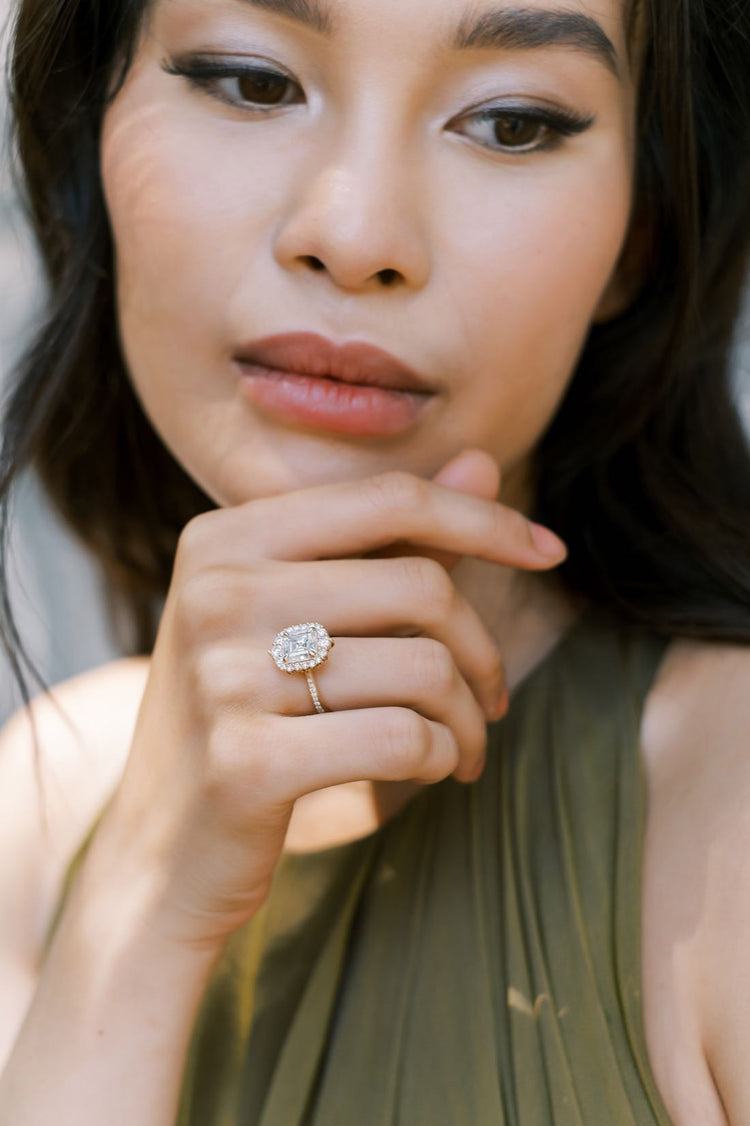
Ethical Elegance
Lab-Grown Diamond
What’s to Love: Cultured diamonds are grown in laboratories that recreate the same environment that causes diamonds to form in the earth. They have the exact chemical, optical, and physical properties as mined diamonds, and are undetectable as lab-grown, except with extremely specialized equipment. That means the exact same sparkle and durability as a mined diamond, but with a smaller environmental and social impact. Lab-grown diamonds are 50 - 90% less expensive than mined diamonds of the same size and quality! They give you the exact same look at a much more affordable price.
How They’re Sold: Lab-created diamonds are graded by the same independent gemological organizations as mined diamonds, using the same 4C’s grading system. They come with the same type of grading report as mined diamonds, but each diamond is laser inscribed to signify that it’s lab-grown and the grading report will state it as well.
The Downside: Lab-grown diamonds may be the affordable alternative to mined, but they’re still a bit pricier than moissanite or white sapphire.
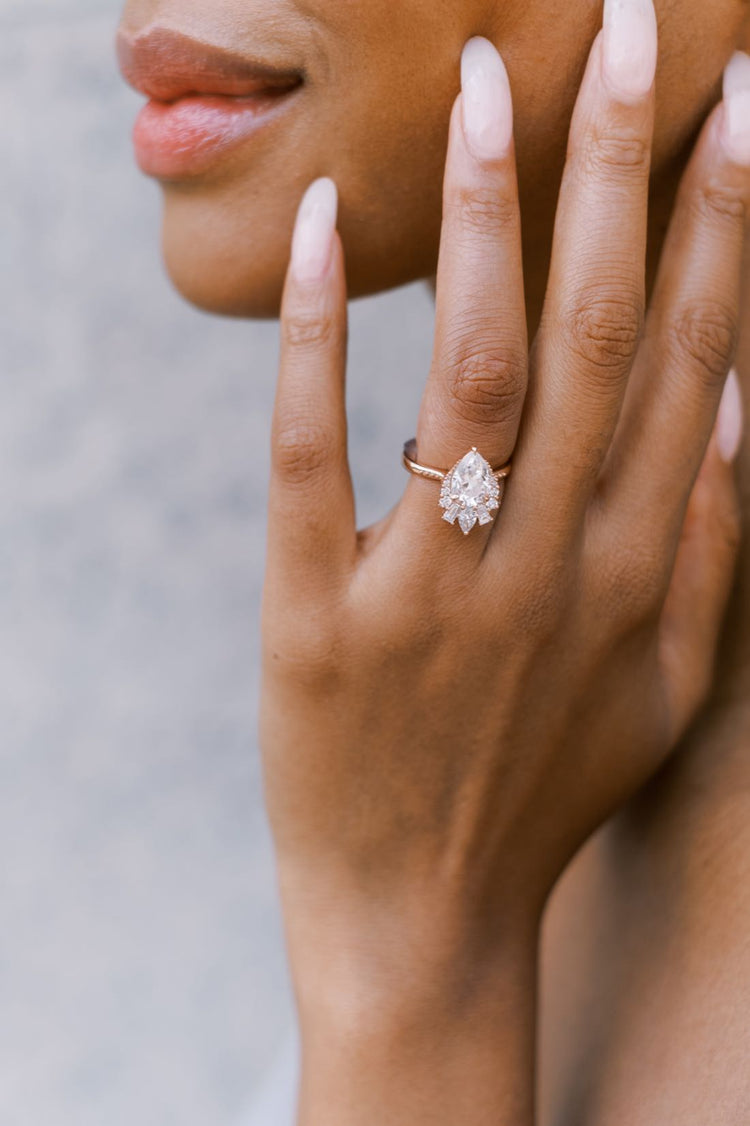
An Affordable Alternative
Moissanite
What’s to Love: Moissanite is also a lab-grown gem but it’s an entirely different mineral than diamond and has its own unique molecular makeup. Moissanite is the second hardest material on earth (second only to diamond), ranking at a 9.25 on the Mohs scale of hardness, which is higher than white sapphire or any other gemstone. Moissanite actually has a higher refractive index than diamond, which results in even greater fire and scintillation. Because it’s grown in a lab, it also has a smaller carbon footprint and lesser social impact than diamond mining.
How They’re Sold: We sell Charles & Colvard’s white moissanite, who were the original makers of moissanite. Their stones are sold in D-F colorless and G-I near-colorless ranges, and all are eye-clean clarity. Each stone comes with a certificate of authenticity/warranty, but there is no individual grading report.
The Downside: Though a more durable option than other gemstones, moissanite is still not nearly as durable as diamond. It also takes a more upkeep in terms of requiring more frequent cleaning than diamond.
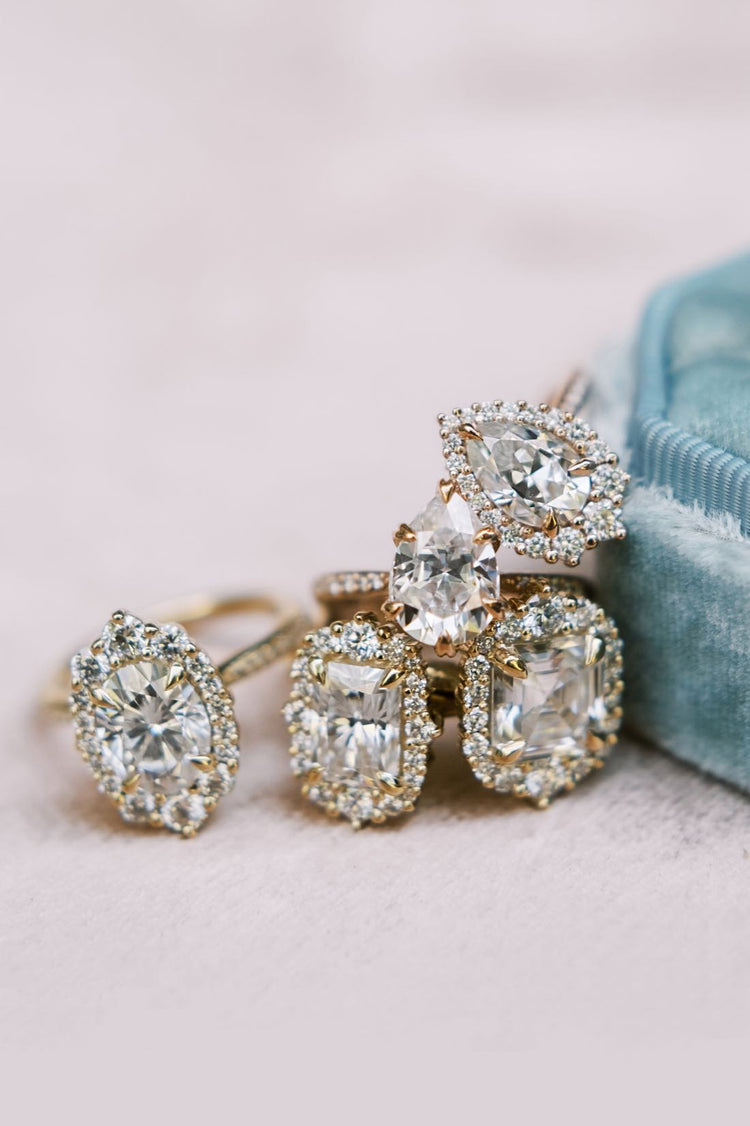
Naturally Radiant
White Sapphire
What’s to Love: Ranking at 9 on the Mohs scale of hardness, white sapphire rounds out the top three for durability. Sapphire isn't as durable as diamond or moissanite, but it's still one of the hardest gems. It's a great option if a mined stone that’s also affordable is your top priority. However, it has a lower refractive index and a more clear, less rainbow-like sparkle, which means less of that fire and scintillation you see in diamonds or moissanite.
How They’re Sold: White sapphires are sold like other semi-precious gemstones using a grading system ranging from AAAA - D. Grades of AAA and AA are considered finer, with better clarity and cut quality. Grades of A - D are lesser quality and will have more visible inclusions and lower cut quality.
The Downside: The major con to white sapphire is it requires extremely frequent cleaning. It has very different optical properties than diamond or moissanite, which means as it gets dirty its facets can’t successfully reflect light back up to the eye the way a dirty moissanite or diamond can. Sapphire is very see-through and only sparkles with a perfectly clean background. When it’s not perfectly clean, it instead looks dull and more milky or opaque. Additionally, sapphire can show signs of wear after years of wearing it regularly. It depends on how hard you are on your hands, but it can get a scuffed or frosted appearance along its facets. We used to sell white sapphires, but discontinued that offering years ago due to the high rate of customer dissatisfaction in terms of upkeep and maintenance.

OTHER ALTERNATIVES
White Topaz, White Zircon, & Cubic Zirconia
Zircon, white topaz, and cubic zirconia (CZ) are sometimes confused for diamond, moissanite, or white sapphire, and are sometimes touted as engagement ring alternatives. They're really affordable, so why not use them? The main reason to avoid these options is due to their lesser durability. CZ ranks at 8-8.5, topaz ranks at 8, and zircon is just 6-7.5 on the Moh's scale of hardness. All will show signs of wear quickly, including scuffing, chipping, breaking, or cracking. Though inexpensive up front, these options end up being more expensive over time, when you consider the cost to replace them.
CHOOSING YOUR PERFECT STONE
If you’d like an expert opinion, Kristin is always available to help make your selection process a little easier.

